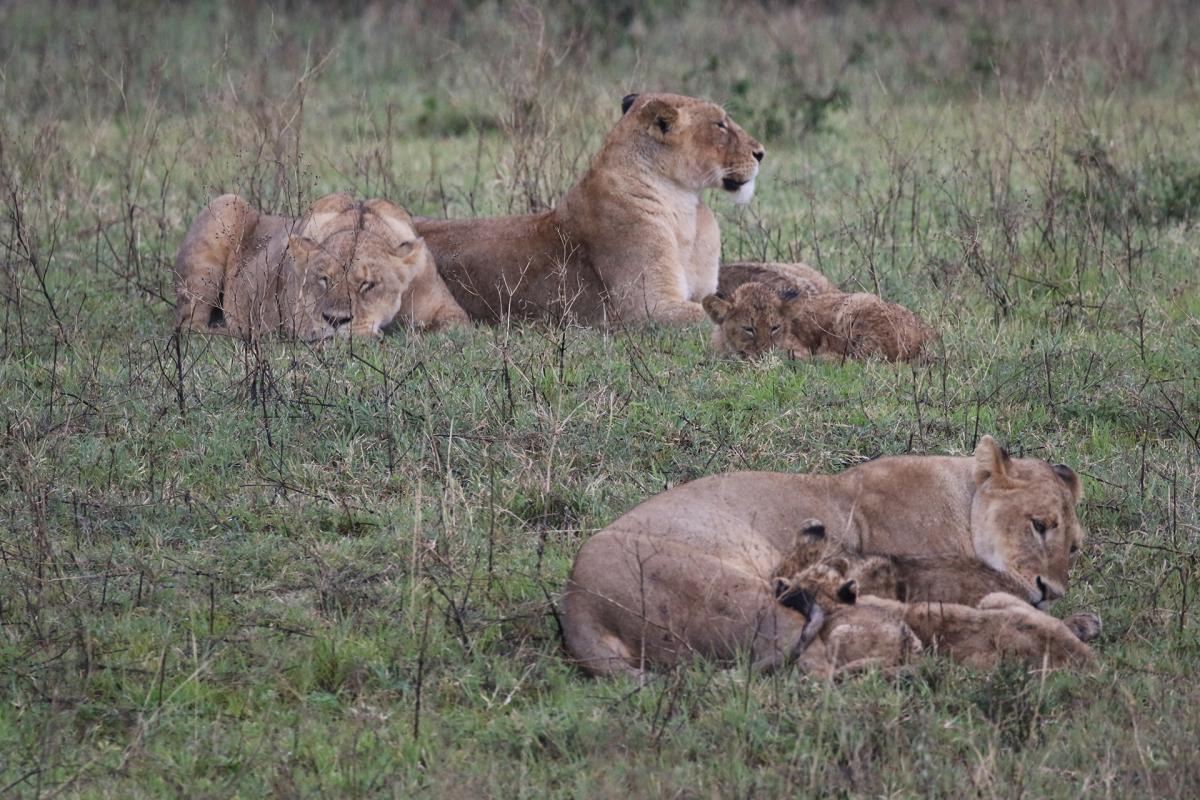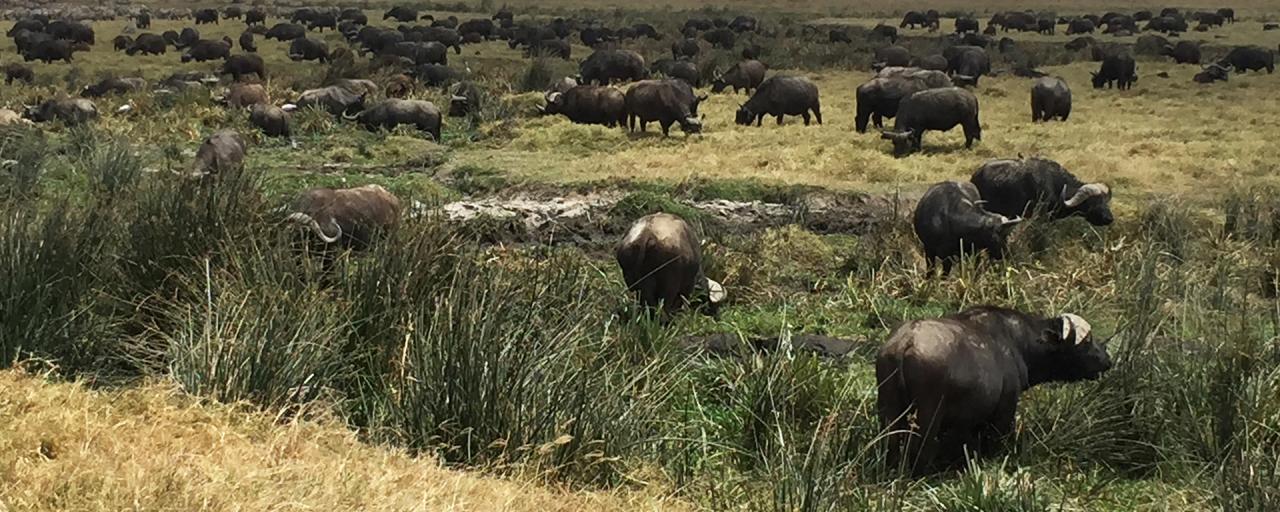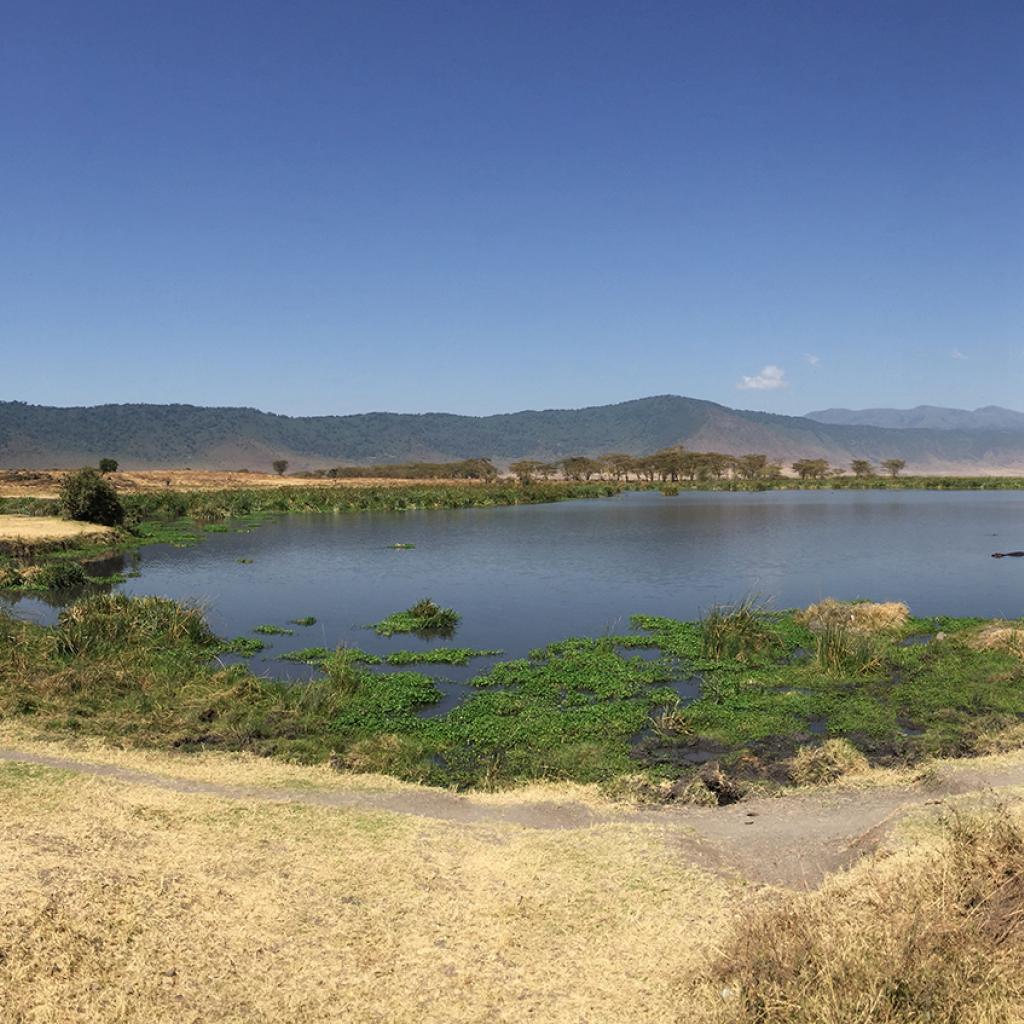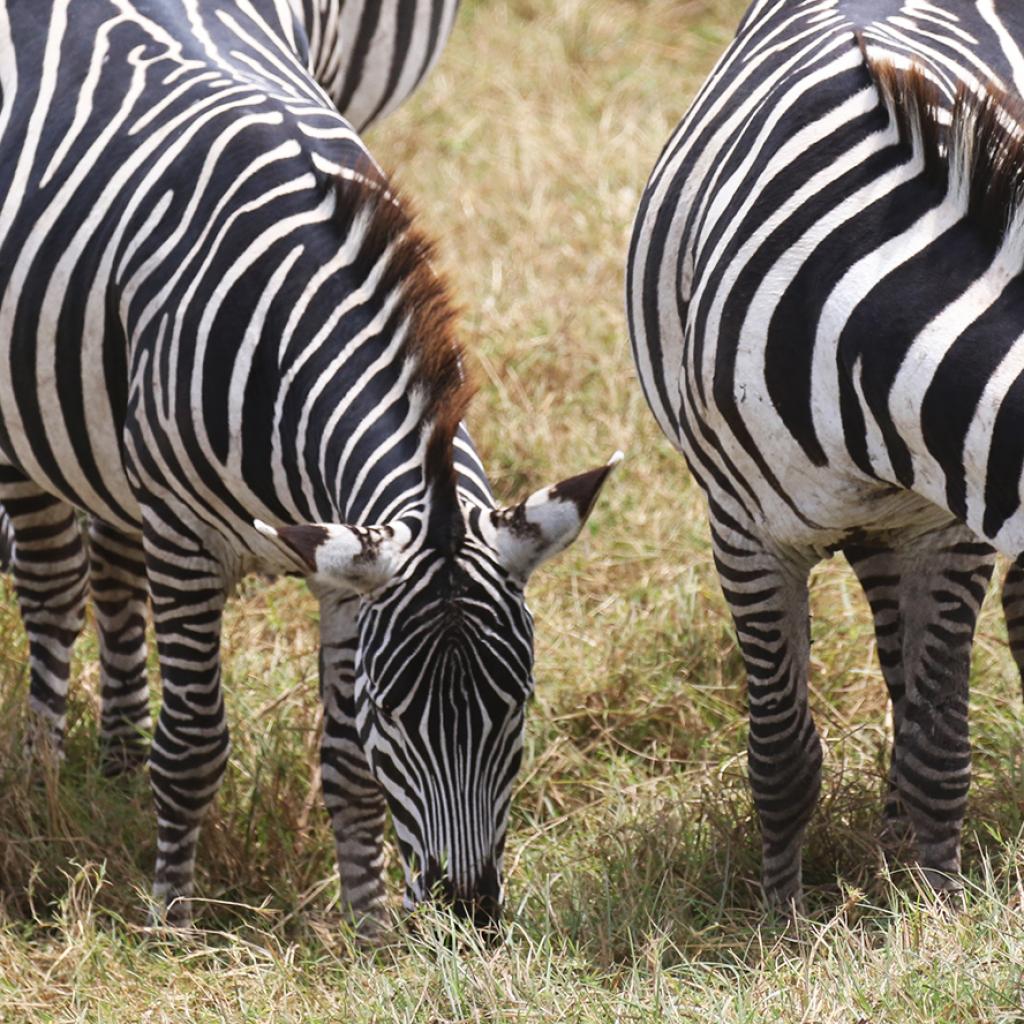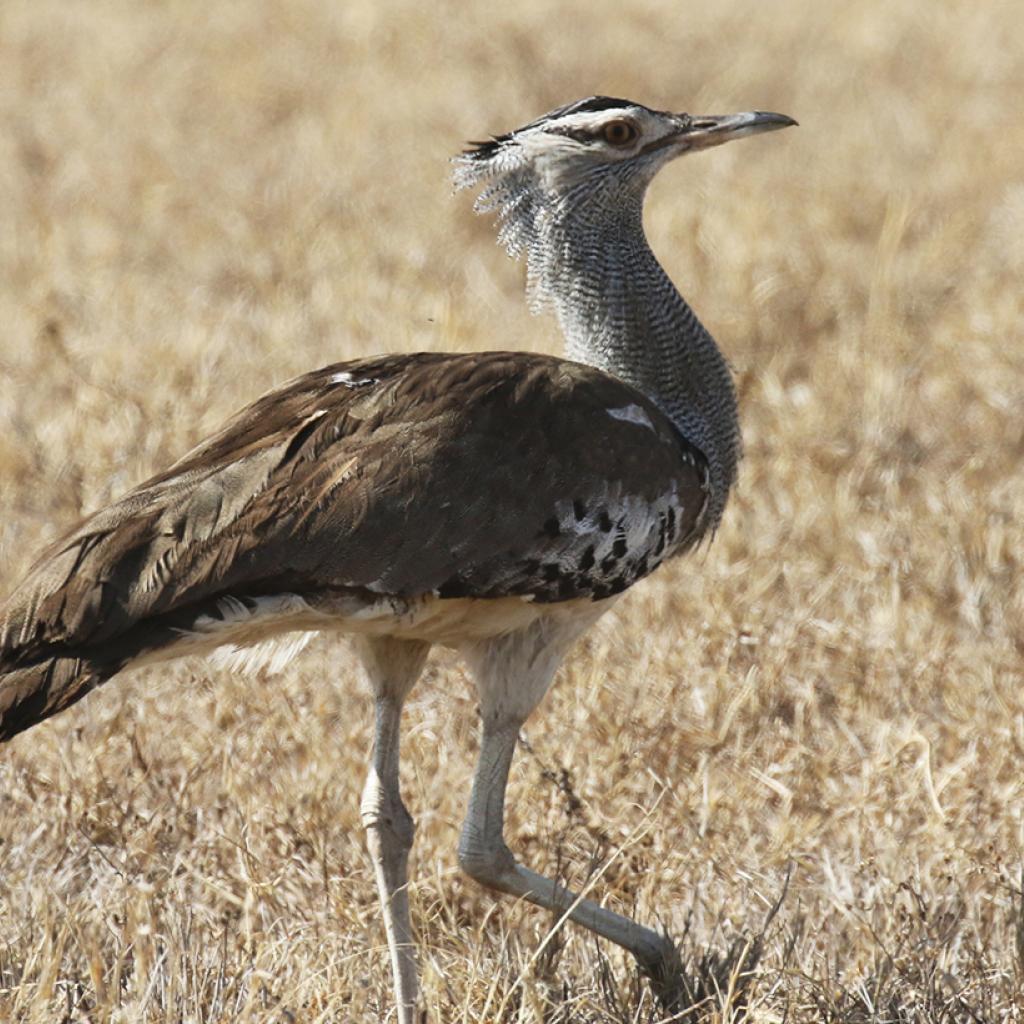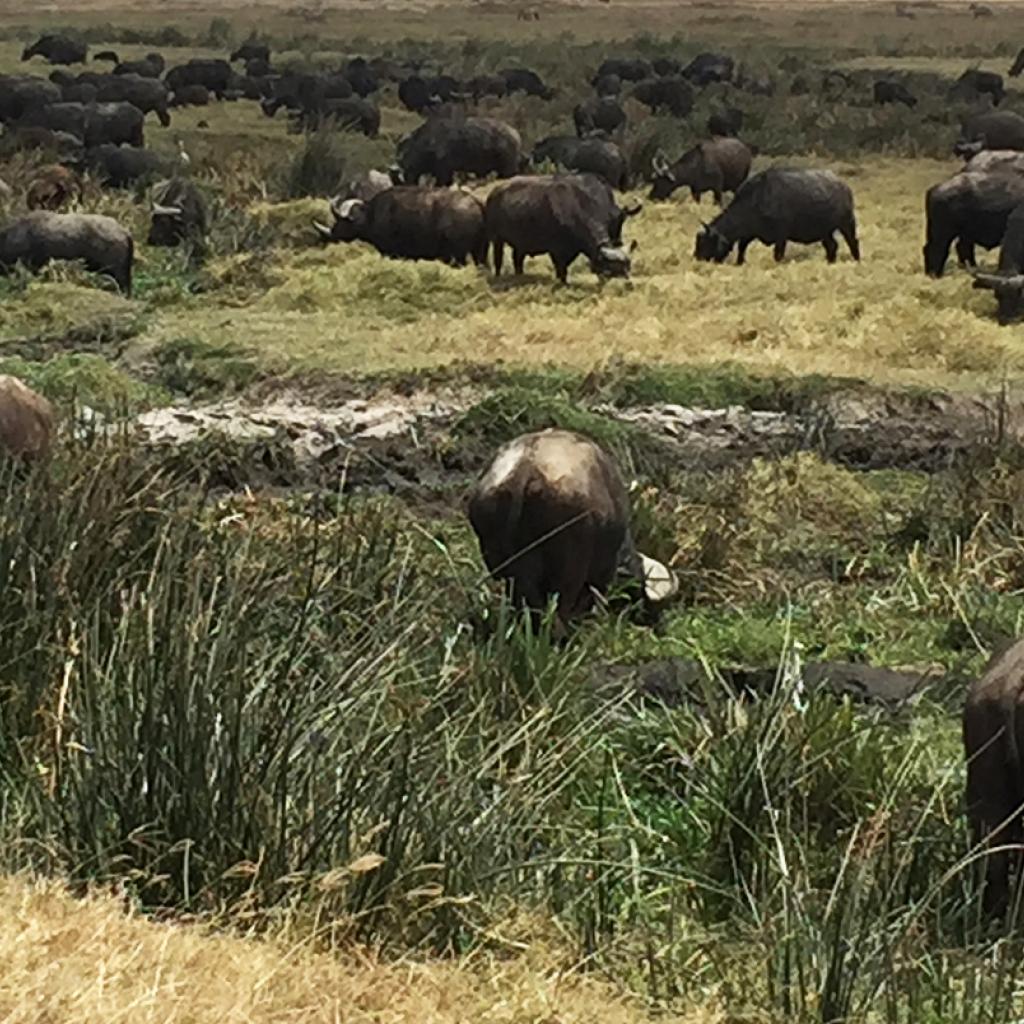This part of the Ngorongoro Conservation Area, that borders the Serengeti National Park, offers some very diversified environments all of them worth visiting; being part of the Serengeti Ecosystem, in some months of the year you can witness one of the wonders of nature: the Great Migration.
From December to March, after the rainfalls these green grasslands attract almost two million wild animals, especially wildebeests and zebras, who feed on grass that is highly nourishing due to the volcanic soil of the area; so it is the ideal place for mothers who give births to calves in January and February and breastfeed and wean them in time to move back before the dry season takes over water resources and feed.
The areas hosting most of the herds of wildebeests and zebras are the Salei plains, the Ndutu Lake, the Lake Masek and the Gol Mountains.
During the dry season the Salei Plains and the Gol Mountains are arid and dusty and become a semi-desert and inhospitable area; while during the green season they undergo a sort of metamorphosis and become a real wonder: grasslands and wild flowers make this area a small heaven where the herds graze during their stay in the South region.
Apart from the herbivorous, the area is also populated by carnivores, such as lions, hyenas, cheetahs, African wild dogs and vultures, that follow the movement of the herds; there are also some animals that reside in the area all year round, such as jackals, foxes, ostriches and honey badgers.
The Ol Karien Gorge, near the Gol Mountains, is a very important place from a naturalistic point of view because the Ruppell’s griffon vulture nests here; the best time to visit these gorges is from March to April, during the mating season of these vultures and when the herds involved in the Great Migration also stay here because there is plenty of feed.
Slightly South-West there are the Ndutu Lake and the Masek Lake, both characterised by shallow waters and high salt concentration; they are surrounded by swamps, woods and meadows where both the migration herds and the resident animals feed.
Numerous animal species can be spotted in this area: elephants, lions, giraffes, ostriches, impalas, gazelles, spotted hyenas, hippos and the crocodiles and as many as 400 bird species; when the migration herds stay in the area, numerous vultures and other predators increase in number.
There is also a paleoanthropological site where remains that have contributed to rewrite the history of man have been found; it lies in the Olduvai Gorge, that is also known as the Cradle of Humankind: a steep-sided ravine stretching along 48 km, formed around 500,000 years ago following a violent seismic activity, has brought to light a series of layers that revealed fossil remains of hominids and animals from different eras, such as Australopithecus boisei, Homo Habilis and Homo Erectus.
A small museum exhibiting details of the findings discovered by the Leakeys in one of the world’s most important archaeological sites and in over 50 years of excavations, help learn more about the history of humanity.
To the North of the Olduvai Gorge you can admire the Shifting Sands, anthracite-coloured dunes that are sacred to the Maasai; they are up to 9 metres high and 100 metres long and are originated by the ash erupted by the nearby volcanos.
The winds that steadily blow Westwards over the plains move the dunes by about 17 metres a year but do not disperse them because the sand is electromagnetic and remains compact as it moves.
In 1979, at Laetoli, in the Ngarusi area, 40 km away from the Olduvai Gorge, the footprints of two adult hominids and a child, dating back to about 3 million and a half years ago were found; these are the most ancient footprints ever found bearing witness to a time when some hominids already walked upright.
The main places of interest in the NCA (Ngorongoro Conservation Area)
- Ngorongoro Crater
- Eastern Highlands
- Southern Highlands
- Northern Plains
